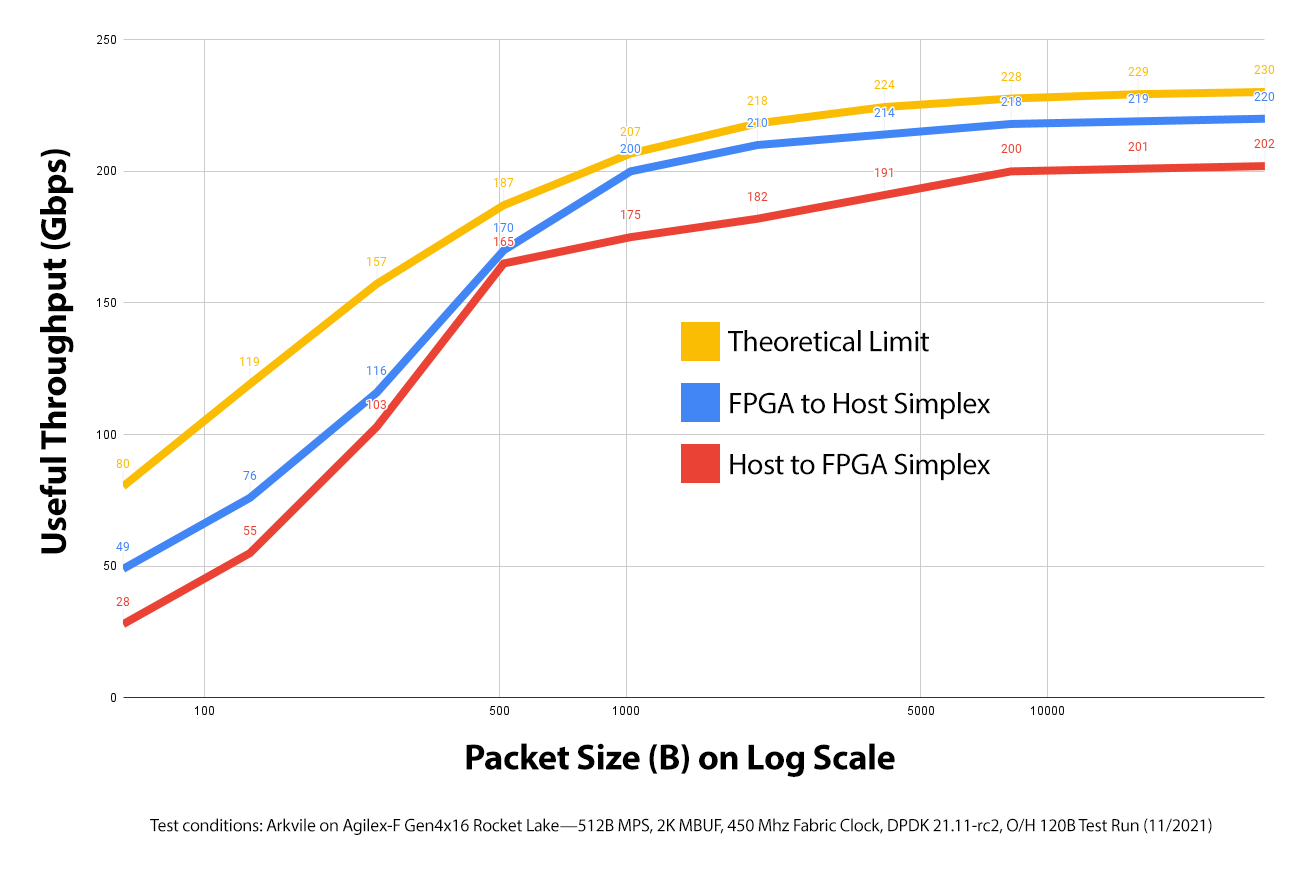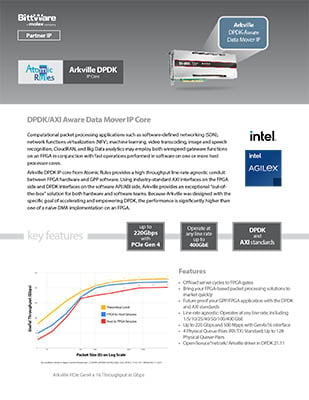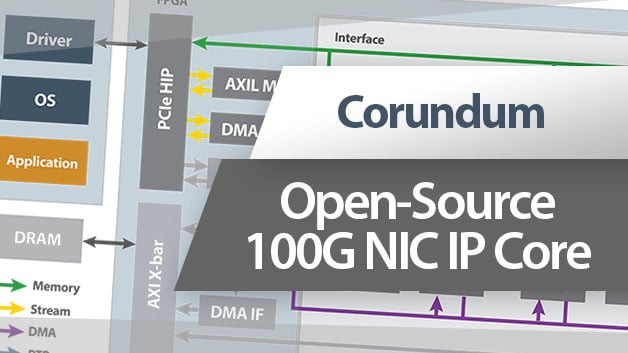Arkville
DPDK/AXI Aware Data Mover IP Core
Seamlessly transport data between FPGA logic and host memory at up to 60 GBytes/s (480 Gbps) in each direction. Arkville provides a high-throughput, low-latency conduit between host memory and FPGA fabric logic, offloading CPU core usage, eliminating memory copies, and improving overall efficiency.
up to 480Gbps with PCIe Gen 5
Operate at any line rate up to 400GbE
DPDK and AXI standards
Features
- Offload server cycles to FPGA gates
- Bring your FPGA-based packet processing solutions to market quickly
- Future proof your GPP/FPGA application with the DPDK and AXI standards
- Line rate agnostic: 0perates at any line rate, including 1/5/10/25/40/50/100/400 GbE
- Up to 480 Gbps and 500 Mpps with Gen5 x16 interface
- FPGA vendor agnostic RTL
- Support for both Intel/PSG and AMD/Xilinx FPGA devices
- Open-source “net/ark” Arkville driver in DPDK 23.11
Arkville PCIe Gen4 x16 Throughput in Gbps

Video
View a demo of Arkville 17.05 performance plots.
Block Diagram, Data Sheet and Product Details
Product Operation
Empty heading
As shown in the block diagram, Arkville has both a hardware and software component. The hardware component is an IP core that resides in the FPGA, producing and consuming AXI streams of packets making ingress or egress. The software component is a DPDK PMD “net/ark”, the Arkville DPDK poll-mode driver. Arkville is a conduit between FPGA logic and Host user memory for bulk data movement or individual packets.
Together, an Arkville solution looks to software like a “vanilla” line rate agnostic FPGA-based NIC (without any specific MAC). DPDK applications do not need to change significantly in order to enjoy the advantages of FPGA hardware acceleration.
Empty heading
Empty heading
Detailed Feature List
Overall
- Ready-to-go solution to FPGA/GPP packet movement
- 4 physical queue-pairs (RX/TX) standard; up to 128 physical queue-pairs
- Single PCIe Physical Function (PF) supporting multiple ports
- Concurrent, full-duplex upstream and downstream data movement
GPP/Software Specific
- DPDK Arkville PMD in DPDK 23.11
- Tested extensively with Jenkins CI/CD
- Unencumbered Application BAR (ABAR) for FPGA application
FPGA/Hardware Specific
- AXI Streaming interfaces for packet movement
- Up to 1 Tbps burst traffic (two 128 Byte wide, 500 MHz, AXI streams)
- Dedicated Application BAR (ABAR) AXI4-master for the FPGA application
Empty heading
Empty heading
Reference Examples
Atomic Rules provides Arkville example designs that may be used as a starting point for your own solutions. These include:
- Four-Port, Four-Queue 10 GbE example (Arkville + 4×10 GbE MAC)
- Single-Port, Single-Queue 100 GbE example (Arkville + 1×100 GbE MAC)
Sample Implementation Results
| Device | Speed | 6LUTs | FFs | M20k | Fmax |
|---|---|---|---|---|---|
| Intel Agilex F-Series | -2 | 81K | 220K | 250 | 500 |

About the Company
Provider of FPGA IP components and solutions for networking and quality-of-time. IP offerings include Arkville data mover for high-throughput, low-latency communications between host memory and FPGA fabric logic.
Interested in Pricing or More Information?
Our technical sales team is ready to provide availability and configuration information, or answer your technical questions.
"*" indicates required fields



